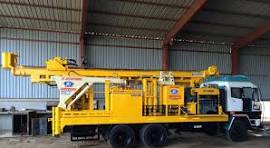Borewells are an essential source for fulfilling the water needs of various households, industries, and agricultural activities. The process of putting a borewell involves drilling into the ground to access groundwater reserves. This technique has become increasingly popular due to the scarcity of surface water and the ever-growing water demand. However, the process of putting a borewell requires careful planning and execution to ensure its effectiveness and sustainability. Here are ten key concepts that one should consider while putting a borewell.
1. Location: The first and foremost thing to consider is the location of the borewell. It is essential to choose a spot that is away from potential sources of contamination such as septic tanks or dumping areas. The location should also have easy access for drilling equipment and be in close proximity to the area where water is required.
2. Water availability: Before drilling a borewell, it is crucial to conduct a thorough survey of the area to determine the availability of groundwater. This can be done by analyzing the geology and topography of the region. It is also essential to consult with local authorities and experts to get an idea of the water table levels in the area.
3. Depth and diameter: The depth and diameter of the borewell are critical factors that determine the yield and quality of water. These parameters vary depending on the geological conditions of the area. It is essential to consult with a hydrogeologist to determine the appropriate depth and diameter for a particular location.
4. Type of borewell: There are various types of borewells, such as dug wells, tube wells, and boreholes. The type of borewell to be used depends on the geological conditions, purpose, and budget. It is essential to choose the right type of borewell to ensure optimal water yield and quality.
5. Water quality: Before using the water from a borewell, it is crucial to test its quality. Borewell water can be contaminated with various pollutants, such as nitrates, heavy metals, and bacteria. Regular testing should be done to ensure that the water is safe for consumption and other purposes.
6. Pump selection: The type and size of the pump used in a borewell play a crucial role in its efficiency. The pump should be selected based on the yield of the borewell and the water demand. It is also essential to choose a pump that is energy-efficient to reduce operating costs.
7. Casing and screen: Casing and screen are used to prevent the borewell from collapsing and to filter out sand and other debris. The quality and size of the casing and screen should be carefully chosen to ensure the smooth functioning of the borewell.
8. Maintenance: Proper maintenance of a borewell is essential to ensure its longevity and efficiency. Regular cleaning, disinfection, and repair should be done to prevent any contamination and blockages.
9. Rainwater harvesting: Borewells can also be used as a source of recharge for groundwater. By installing a rainwater harvesting system, the excess rainwater can be directed into the borewell, replenishing the groundwater reserves.
10. Legal requirements: Before putting a borewell, it is crucial to obtain necessary permits and follow the regulations set by the local authorities. This helps in preventing any legal issues and ensures the sustainability of the borewell. 
In conclusion,
putting a borewell requires careful consideration of various factors to ensure its effectiveness and sustainability. It is essential to consult with experts and follow proper guidelines to make the most out of this valuable source of water. With proper planning and execution, borewells can play a significant role in meeting the water demands of a growing population.



You must be logged in to post a comment.